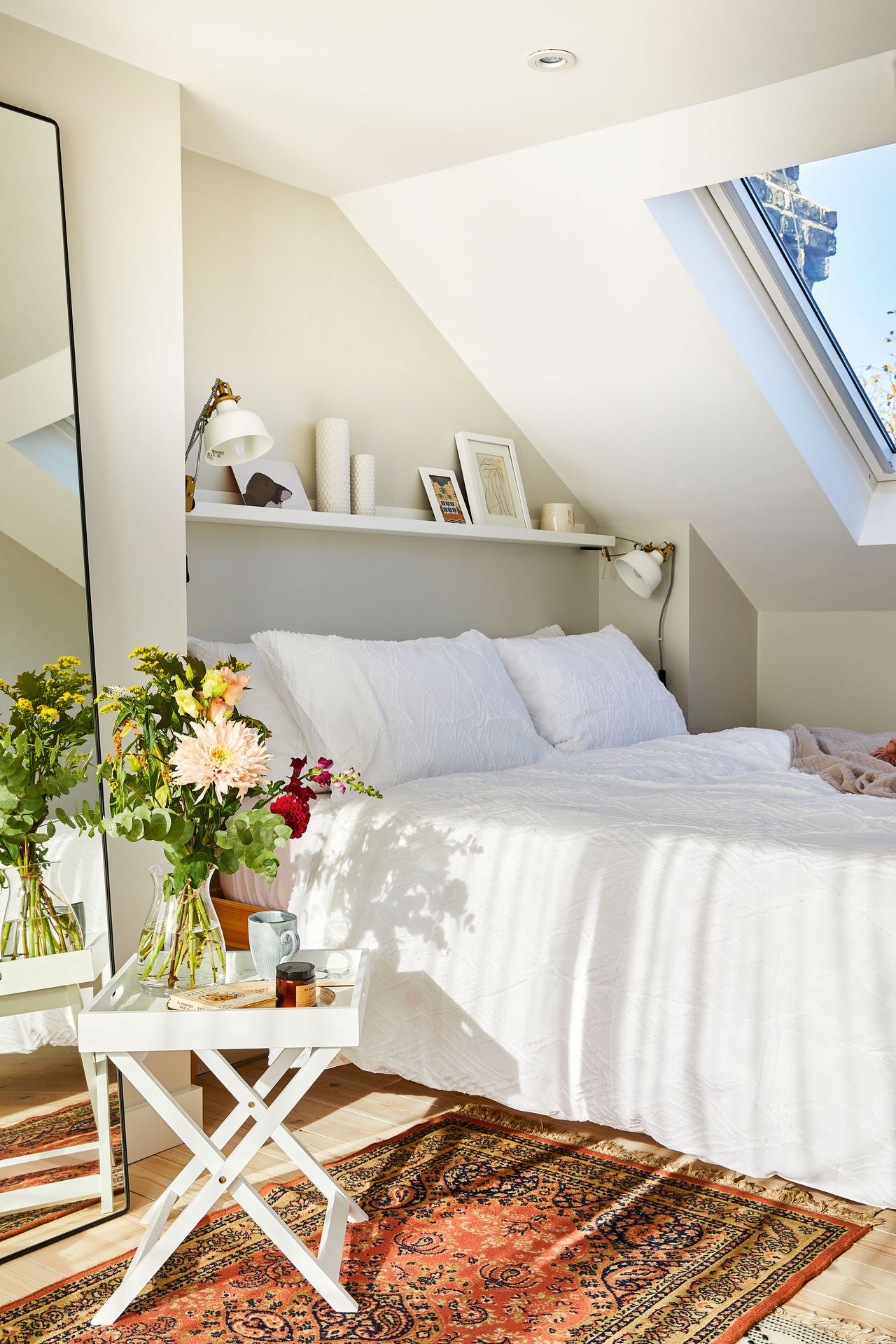Table Of Content

Whether in photography, imagery, or design, the rule of thirds is an alternative way of gaining a new perspective on a particular layout. Note how the designer of the classic cover artwork of the movie Jaws used the central column to bring focus on the shark as well as the swimmer. The negative space in both the left and right columns is empty, creating tension between the two. There's nothing in either the bottom left or the bottom right thirds, bringing the viewer's eye straight to the center.
The Rule Of Thirds Beginner’s Guide To Enhance Your Graphic Design
This could mean aligning the horizon of a landscape along one of the horizontal lines or placing a subject’s eyes at one of the intersections. HubSpot uses rule of thirds to draw immediate attention to its slogan and "Get HubSpot free" CTA on the homepage, as most visitors' attention will start on the left side of your website. Then, the cartoon images are placed on the right thirds section, to balance out the page. This helps create a user flow — from left to right — which would be more difficult to achieve with a symmetrical design. The Rule of Thirds has its roots in art and photography as a way to create balanced, compelling images. By applying this principle to your UX/UI designs, you can create a sense of harmony and balance, making it easier for users to navigate through your interfaces.
Examples of Rule of Thirds in UI Design
So your design has to give the audience a sense of where those points are. The rule of thirds is all around you, and you'll start to recognize why certain images or objects look more aesthetically pleasing. Once you build this habit, you'll never take a picture or design something in the same way again. When you're designing or taking photos, I recommend making 3-4 variations of the project you're working on. For photography, look to break the rule by taking unconventional shots from lower angles, ignoring the rule of thirds.
Take Your Graphics to the Next Level!
Putting your main subjects (such as elements, text, images, or icons) here can make your work more interesting and dynamic. Many design techniques and photography rules can help you achieve the results you desire. One such principle that has stood the test of time is the renowned 'Rule of Thirds’. Strategically placing key components at intersecting points or lines can create a dynamic balance within your designs.
Podcast Thumbnail Ideas to Boost Your Show’s Visual Appeal + Best Practices
These are focal points (or “sweet spots”, as those in the industry call them). In a photograph, you might want a person’s eyes or smile on such a point to help tell the story of the image. With a little thought, and depending on what’s going on in the image (is there a mountain in the background, etc.?), you can show what’s happening with the most impact. Does your subject look confident that he or she is about to climb that mountain? When you’re about to take a photograph, you can enable a 3x3 grid on your digital camera screen and add it as an overlay. Focus on the four intersections the grid lines form and align your subject with one of these.
How To Make An invoice: A Step-by-Step Guide For New Entrepreneurs
If you're a book on a shelf, you're competing against thousands of other books for our attention. This is why many designers rely on the rule of thirds not only stand to out, but to draw us in with perfect harmony and visual intrigue. While the right colors, imagery and fonts have a lot to do with this, the layout is one of the most important aspects of book design. The rule of thirds for landscape photography is likely the easiest way to see an improvement in your images.
This is a classic example of creating dynamic frames in photography, web design, or graphic design using the rule of thirds. Rule of Thirds is used in design by taking advantage of the grid intersections, also known as sweet spots, which are the best guide for object/logo/text placement. This is because when the eye falls on a screen, sheet, or image, it is subconsciously and constantly moving over the page. If you’re not taking original photography for your print designs, you can still apply the rule of thirds principle to the images you have to work with.
The main idea is to position key elements along these gridlines or at their intersections. This grid-based approach adds structure and guides the user’s eye to desired areas, enhancing overall usability and visual appeal. The Rule of Thirds is widely used in graphic design and photography to create visually dynamic and well-composed images. By adhering to this rule, designers and photographers can achieve balanced compositions, draw attention to important elements, and create visual interest and flow within the frame. Needless to say, the Phi Grid takes more work to create than the Rule of Thirds grid.
Examples of Using the Rule of Thirds in Graphic Design
3rd Space Mgmt Visually Showcases Third Space Theory - PRINT Magazine
3rd Space Mgmt Visually Showcases Third Space Theory.
Posted: Fri, 22 Jan 2021 08:00:00 GMT [source]
For example, in web design, the rule of thirds can help to structure and convey information more effectively for website visitors. The most important elements of your landing page like headings or a call to action should be placed along the four intersections for users to spot immediately and take action. The asymmetry created by composing an image according to the rule of thirds is what makes it more eye-catching. For example, if the main subject in the image is positioned in the middle, it looks static but if it’s closer to one of the edges, the eyes follow it. That should be our goal as once we understand the Visual Principles we don’t need rules or guidelines but rather can intellectually/intuitively solve our unique visual problems. There have been many investigations into what is beautiful or creates beauty.
Framing and Centering: Directing Player Attention in Open 3D Worlds - Game Developer
Framing and Centering: Directing Player Attention in Open 3D Worlds.
Posted: Tue, 31 Aug 2021 14:48:44 GMT [source]
It is important to remember that you can use the rule for both landscape and portrait designs. Happily, the Rule of Thirds allows us to make a far simpler grid, as we’ve seen. It’s the more widely used of the two varieties, mostly due to its simplicity. Learn how to use balance and white space in your designs by distributing your elements to promote visual flow. The eyes, of course, are always the primary focus of the shot that the viewer’s gaze will land on immediately. As such, try to align the subject’s eyes along the top horizontal guiding line — or better yet, at an intersection.
Next, the user will jump down and look at the lower left corner and finally the lower right corner. Understanding this pattern allows you to place vital information first. Websites tend to place the logo in the upper left for branding purposes. Every page the user lands on will have the company name and logo and reinforce recognition. But, because the rule of thirds relies heavily on asymmetry, we can use this to our advantage. Usually you have only some text and an image to use, so it's not easy to know what to do.
Imagine that you’ve got zero skills in the arts and crafts arena, but your partner wants you to gift them a handmade card. John Thomas Smith, an engraver, first coined the term “Rule of Thirds” in 1797. He emphasized using grids and dividing paintings to catch the beholder’s attention. One of the first things a budding photographer learns is to hold the camera properly. Use the Rule of Thirds to fill in the space but also layer elements on top that send the message you want or elicit an emotion in the viewer. In our kitchen, notice how our exposed shelves create harmony because one is a bit longer than the other, anchored by a slightly off-center window.
Rule of thirds also known as the golden grid rule is a technique where a composition is aligned to a three by three grid. Therefore, as a designer, you have a prime opportunity to take advantage of this innate tendency, maximizing the impact of your design by appealing to your user in this way. Learn how to effectively use the principle of hierarchy to direct the viewer’s focus. Many design techniques are full of calculated and tested strategies that help keep things eye-catching, yet effective. In UI design, the main purpose of this rule is to make designs look interesting and effective.
In this shot, the attractive eye of the Egyptian Goose is placed roughly in the upper third of the photo, contrasting with the rest of the scene. Not only does this give the rest of the scene more room in the photo, it also places the bird in a more natural pose that shows most of its body. Mylio Photos – Access your photos from anywhere, without the cloud! Easily showcase your photos on-the-go, resolve duplicates, find faces and look for those stunning locations. Tamron has you covered, with superior optics perfect for any situation. With weather sealing and advanced image stabilization, you’ll open up your creative possibilities.
A no-frills website with a minimalist color scheme, it hits you precisely where your eyes land first. The GV icon on the top left is the first thing one sees, followed by the team, portfolio, and news. Years of data, research, and eye-tracking software have proven that when we first land on a website, our eyes travel to the top left of the screen.
The success of any design or photograph hinges on the use of balance, color, and other foundational elements of composition. When tasked with combining multiple disparate elements like text, photos, and abstract shapes into a single design, the challenge is to bring a sense of harmony and cohesion to the layout. In portrait photography, you can utilize the rule of thirds in your image by aligning the subject at one of the sweet spots. Popular ways to use this are focusing on the subject's eyes at one of the four intersections, drawing us in immediately. Graphic designers, artists, and photographers rely on this principle that offers direction on structure, hierarchy, and balance of design elements.









